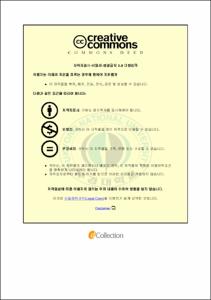High Throughput Multi-User Visible Light Communication with LEDs for High-speed Wireless Data Networks
- Abstract
- With the advancement of light emitting diode (LED) technology, visible light
communication (VLC) emerged as a novel way of providing data communication. Using
visible light as the communication medium, VLC possesses many advantages over
conventional RF communications, such as large unlicensed spectral bandwidth, usability at
RF-prohibited areas. Since data transmission is done via LEDs using intensity modulation
techniques, VLC is able to provide data rates faster than the LED switching rate, which is a
several hundred of Megahertz. This thesis provides a design of an indoor multi-user (MU)
VLC system and it analyses the system addressing some of the important issues in indoor
VLC. Moreover, the thesis provides a fundamental analysis of the VLC system in the
aspects of indoor illumination, power reception and channel dispersion in the indoor
environment. The ultimate target of designing the indoor MU-VLC system is achieved by
conducting the study in four sections.
In the first study, a decision feedback equalizer (DFE) with adaptive recursive least
square (RLS) algorithm is analyzed for the reduction in the length of the training sequence
(TS) used in the DFE. The reduced TS length allows more data bits to be transmitted, and
hence facilitates higher bit rate. The use of RLS-DFE also enables the VLC system to reduce
the multipath induced inter-symbol interference (ISI) that helps to increase data rate with
improved bit error rate performance (BER).
Secondly, the thesis presents the studies on multilevel pulse amplitude modulation
(PAM) with RLS-DFE for VLC systems. The PAM scheme supports higher throughput andthe RLS-DFE facilitates to use fewer bits for the TS, so that the data rate can be increased
over the limitation of LED modulation speed. The simulation results of the outage area
probability show that the VLC system supports high data rate transmission at nearly errorfree
rates for most areas in indoor environments.
As a promising way of reducing the multipath effects, the third study employs
orthogonal frequency division multiplexing (OFDM) in the indoor VLC system. The
original OFDM signal inherently composed with signal peaks with high power, causing high
peak-to-average power ratio (PAPR). At the transmission of this high PAPR signal, the
LEDs are overheated due to the limited output power and the transmitted signal is also
distorted due to the nonlinear characteristics of the LEDs. Therefore, it is crucial to reduce
the PAPR of the OFDM signal before it is fed into the LEDs. The third study of the thesis
presents the analysis of μ-law CT and exponential CT schemes in terms of PAPR reduction
and it also proposes a novel CT scheme that can be efficiently used for the reduction of
PAPR in VLC-OFDM. The simulations comparatively analyze the performances of each CT
scheme with other CT schemes. It shows from the results that the CT schemes perform with
significant PAPR reduction in VLC-OFDM signal providing excellent BER performances.
The MU-VLC system is designed in the last study, proposing a novel MU-VLC system
exploiting the visible light spectrum. The proposed scheme is defined as color-clustered
multiuser VLC and the study makes sure that the MU-VLC system is complete in that it
encompasses transmission and detection methods for multiple user access, while ensuring a
color-controlled flicker free illumination. The simulations demonstrate that the proposed
MU-VLC system provides an efficient multiuser VLC platform with significant
performances over various transmission scenarios.
- Issued Date
- 2014
- Awarded Date
- 2014. 2
- Type
- Dissertation
- Publisher
- 부경대학교
- Affiliation
- 부경대학교
- Department
- 산업대학원 전자정보통신공학과
- Advisor
- 정연호
- Table Of Contents
- 1. Introduction ..........................................................................................1
1.1 Visible Light Communication .............................................................. 1
1.2 Motivation and Objectives ................................................................... 2
1.3 Chapter Organization ........................................................................... 4
2. Indoor VLC System Design ................................................................5
2.1 VLC Channel Model ............................................................................ 5
2.2 Indoor Illumination Analysis ................................................................ 6
2.3 Received Power Analysis ..................................................................... 8
2.4 Impulse Response and Delay Spread ................................................. 11
3. Performance Analysis of the Indoor VLC System .........................14
3.1 Indoor VLC with RLS-DFE ............................................................... 14
3.1.1 Principle of Recursive Lest Square Decision Feedback
Equalizer ................................................................................. 15
3.1.2 Performance of the Indoor VLC with RLS-DFE ................... 17
3.2 Multilevel Pulse Amplitude Modulation based VLC ......................... 20
3.2.1 Principle of PAM for VLC ..................................................... 21
3.2.2 Performance of 4-PAM and RLS-DFE in indoor VLC .......... 21
3.3 PAPR Reduction of OFDM in VLC ................................................... 25
3.3.1 PAPR in VLC-OFDM ............................................................ 27
3.3.2 Principle of CT in VLC-OFDM ............................................. 28
3.3.3 Nonlinear LED Model and VLC-OFDM System .................. 29
3.3.4 Application of CT Functions for VLC-OFDM ...................... 31
ii
3.3.4.1 μ-law CT ............................................................. 31
3.3.4.2 Exponential CT ................................................... 34
3.3.4.3 Novel CT ............................................................ 38
3.4 Color-Clustered Multi-User VLC ....................................................... 45
3.4.1 User Allocation ...................................................................... 47
3.4.2 MU Detection and User Separation ........................................ 49
3.4.3 MU-VLC Transmitter Design ................................................ 54
3.4.4 Performance Analysis of the MU-VLC System ..................... 57
4. Conclusions ........................................................................................62
References ....................................................................................................65
List of Publications .....................................................................................71
- Degree
- Master
- Files in This Item:
-
-
Download
 High Throughput Multi-User Visible Light Communication with LEDs for High-speed Wireless Data Networ.pdf
기타 데이터 / 3.41 MB / Adobe PDF
High Throughput Multi-User Visible Light Communication with LEDs for High-speed Wireless Data Networ.pdf
기타 데이터 / 3.41 MB / Adobe PDF
-
Items in Repository are protected by copyright, with all rights reserved, unless otherwise indicated.